When Was The School Of Athens Painted
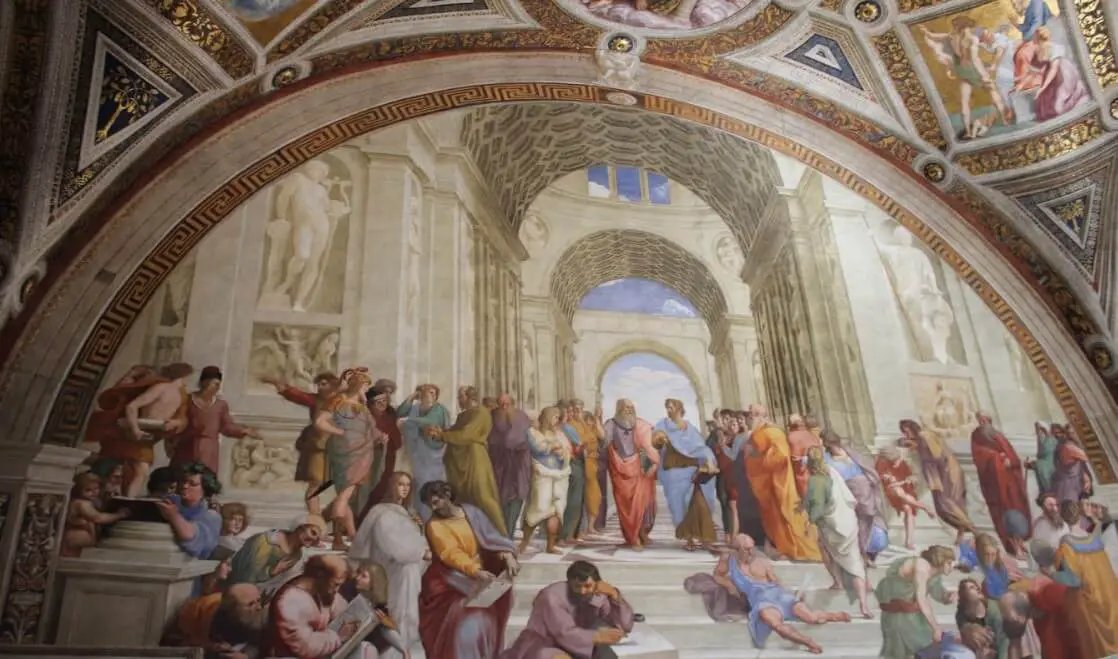
School of Athens Painting Characters, Location & Details about Creative person
Painted between 1509 and 1511 in the Apostolic Palace by Raphael, the Schoolhouse of Athens is one of the most important and fascinating frescos in history. Defended to classical Greece and Rome, Raphael'south Schoolhouse of Athens painting depicts the birth of philosophy of almost every kind.
Being a tourist attraction for over centuries and having a vibrant portrayal of several classical personas, the School of Athens painting has a lot to impress with all its essential particulars.
The Schoolhouse of Athens Painting: Raphael's Masterwork
Radiating the true essence of the classical menstruum, Raphael's masterpiece the School Of Athens resides in the "Raphael Rooms" in the "Stanza della Signatura" in the Vatican Museums within Apostolic Palace– also known equally the Vatican Palace.
The Schoolhouse of Athens painting, along with others in the Raphael Rooms, was commissioned past Pope Julius II to decorate the walls of his palace. In the 15th century, there was a tradition of decorating private libraries with portraits of great thinkers. Similarly, as the "Stanza della Signatura" was Pope Julius' library, Raphael took the idea to a whole new level that reflected philosophy, theology, literature, justice, and other fields of learning altogether within 1 frame.
Containing fifty notable classical figures including Plato, Aristotle, Socrates, Pythagoras, and several others, the painting is as well a splendid paradigm of Raphael's use of linear perspective with a key vanishing point at Socrates' left hand. Information technology feels similar if the viewer/painter was standing with the characters on the lower flooring while the seen supposedly took place.
Get to know the painter – Italian Renaissance artist Raphael
Celebrated every bit a superstar amongst his contemporaries, Raffaello Sanzio da Urbino (1483-1520) was ane of the about prolific artists of the High Renaissance. He started every bit a young apprentice to the great Pietro Perugino, a well-known painter of his day who also painted biblical scenes on the walls of the Sistine Chapel.
Raphael was in his mid-20s when he started his piece of work on the Raphael Rooms. He was invited to Rome and commissioned by Pope Julius Two to paint the walls of the Vatican Palace: the private quarters of the Pope Julius 2. There Raphael painted his fresco 'the School of Athens' with which the Pope was then impressed that he had Raphael paint the whole of the 'Stanza Della Segnatura'. Having led a short yet eminent life, Raphael was cached in Pantheon in Rome, amongst many other famous personalities of Rome.
The Raphael's Philosophy School of Athens Painting Characters
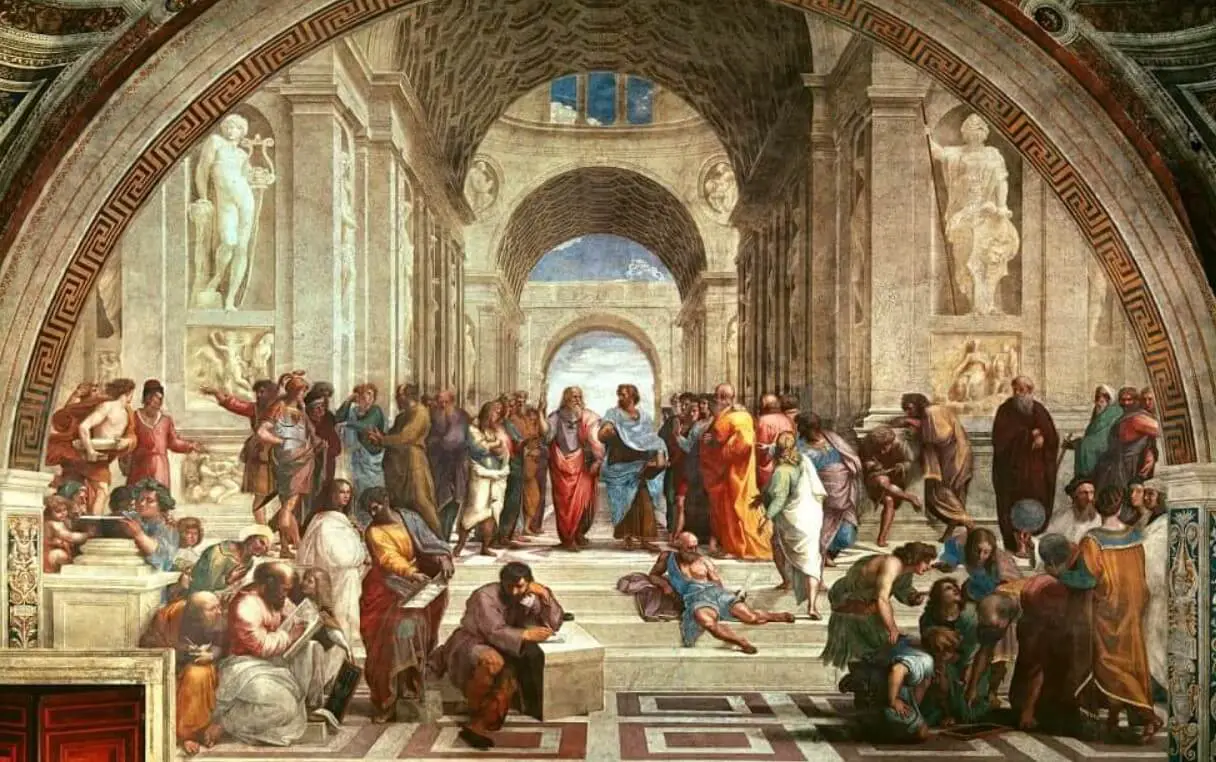
Defended to a theme of philosophy leading to knowledge , the School Of Athens Painting has 50 characters in total. These characters are great classical philosophers, scientists, and mathematicians from classical antiquity painted sharing their ideas and learning from each other.
Plato and Aristotle in the School of Athens
The two most prominent and central characters of Raphael'southward Schoolhouse of Athens Painting are founding fathers of western philosophy: Plato and his disciple Aristotle. Plato can exist seen pointing up suggesting his cosmological theories, depicting the divide in their philosophies-another theme of the work. Whereas, Aristotle is suggesting the footing of his practical ethics by gesturing towards the floor.
The balance of the characters are philosophers of some kind with each figure to Plato's correct representing Plato's theories on philosophy while on Aristotle's left representing Aristotle'south.
Other Characters in the Schoolhouse
At that place is still a contend on some of the characters in the School of Athens painting since Raphael himself didn't label them. However, the main personalities other than Plato and Socrates observe their portrayal in this magnificent piece of art.
- On the left of the School Of Athens painting, Socrates is represented with a dark-brown tunic.
- Dressed in pink at the forefront, appears Pythagoras, the founder of geometry and architecture.
- The male parent of modern geometry, Euclid appears on the right with a carmine tunic while pedagogy a disciple.
- Right next to Euclid, is Ptolemy: the slap-up mathematician and astronomer with a terrestrial globe in his manus and wearing a yellow robe.
- An old gentleman sprawled on the steps appears to be Diogenes, the founder of the Cynic philosophy.
- The character seated in the first row with his head resting on his hand appears to be the philosopher Heraclitus.
Though considered widely as a masterpiece of Raphael's skill, at that place are a number of facts that most people don't know however about the School Of Athens Painting.
Raphael Schoolhouse of Athens Facts You Didn't Know
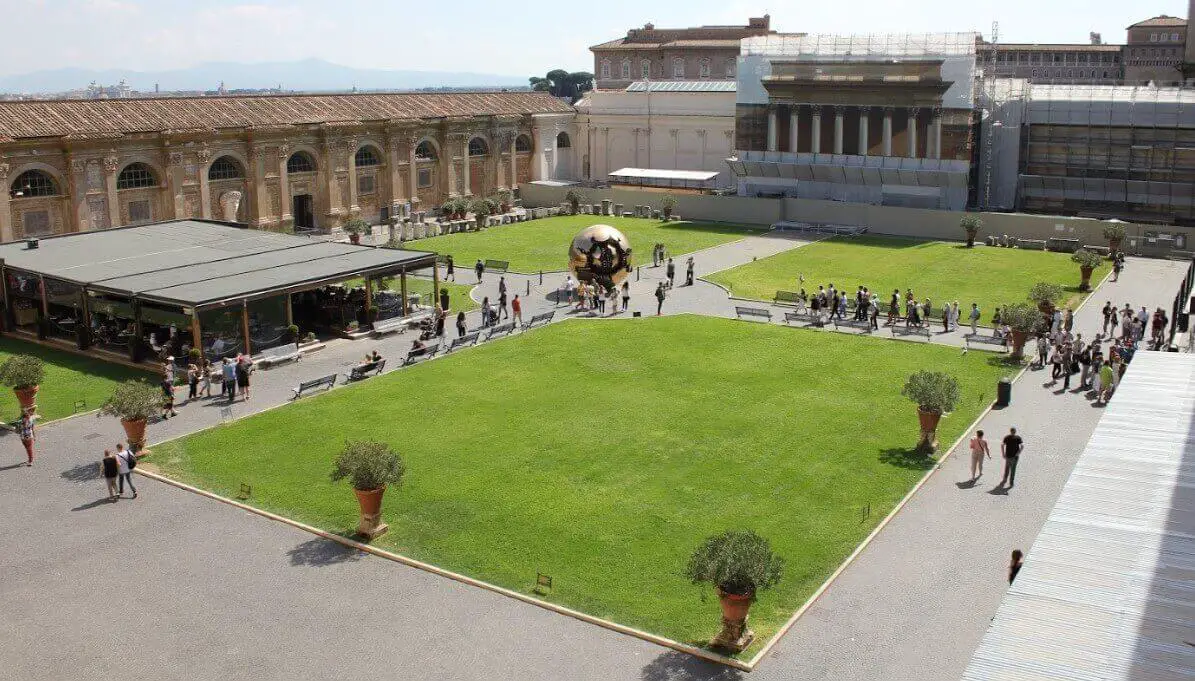
- An architect and a relative to Raphael who took him to Pope Julius Ii, Bramante actually helped Raphael with the architectural elements in the painting, hence and then having an awful resemblance to the St. Peter'south Basilica.
- The 'Stanza della Segnatura' was the first room to be painted with frescoes while the Raphael's School of Athens was the third of the four paintings to be produced.
- The fresco of the School Of Athens painting measures five meters × 7.7 meters.
- The label above the fresco reads "Causarum Cognitio," which means "Noesis of Causes."
- The two statues in the back of the characters are Apollo, God of light, archery and music, and Athena, goddess of wisdom in the Roman form of Minerva.
- Raphael painted his contemporaries as the characters in the painting. Plato, for case, painted with the confront Leonardo da Vinci, Heraclitus seems to accept the confront of Michelangelo.
- Having painted himself as one of the students close to Pythagoras, Raphael didn't leave without integrating his own portrayal in his masterpiece.
- Raphael died very immature at the age of 37.
Details about Schoolhouse of Athens Painting Location
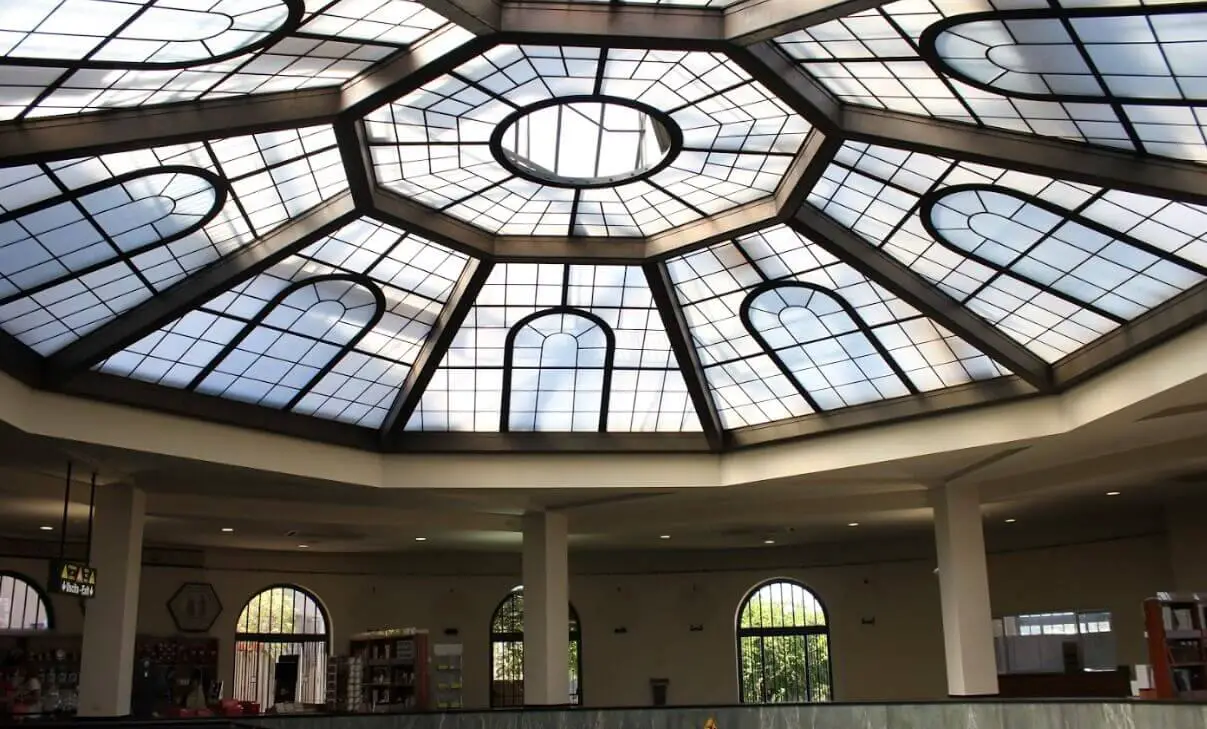
The Schoolhouse of Athens painting by Raphael has been painted on a wall of the first of the four Raphael Rooms in the Stanza della Signatura in the Apostolic Palace in Vatican city, which is part of the Vatican Museums.
Visiting Raphael'south Painting Schoolhouse of Athens – Possible or non?
Being the official residence of the Pope of the Catholic Church building and a center of the religious and administrative functions of the Vatican City, the Vatican Palace is sometimes misapprehended to be impossible to visit by many people.
Besides the Pope's residence, the palace has a number of buildings and museums to choose from. Numerous tours go on going ahead every day where the visitors tin enjoy the magnificent rooms elaborated by the guides.
Though the Pope's quarters strictly restricted from visitors, there is still a chance to bask the Holy See (the Pope) past attending an audience with Pope Francis –cheque prices online here.
Skip-the-Line Tickets to the Vatican Museums
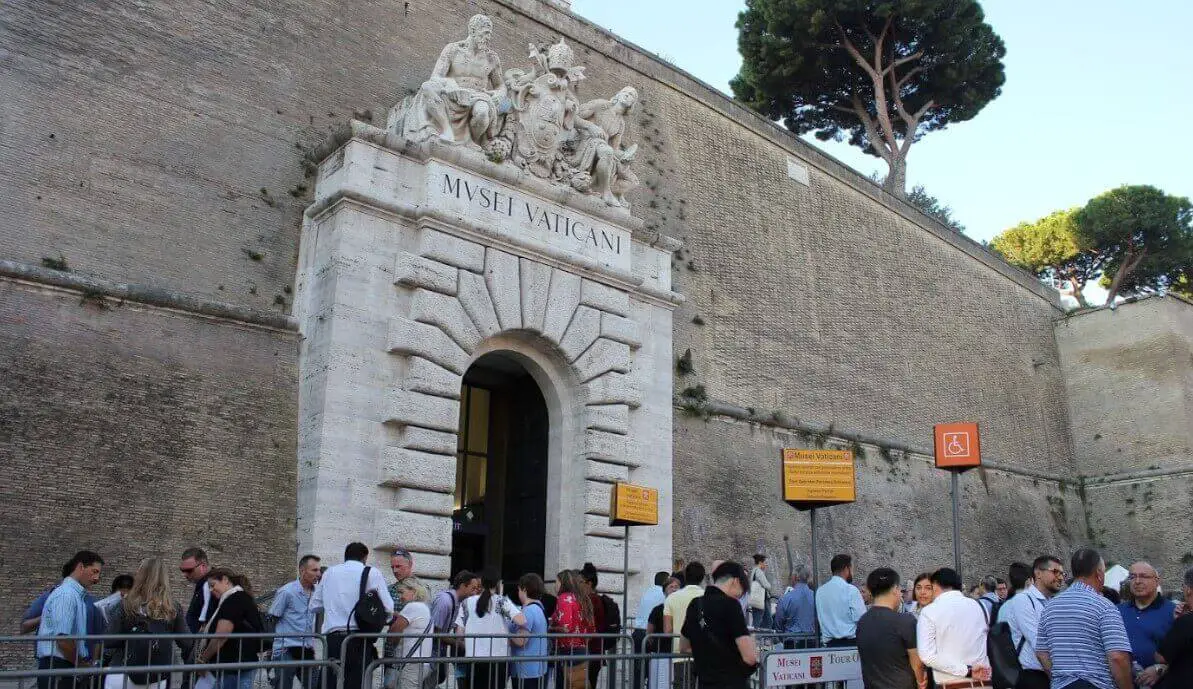
Book your tickets for the Papal Audience and Vatican Museums Tour here or for the Vatican Tour with Sistine Chapel and St Peter here now and enjoy the best skip-the-line bout ever.
FAQs about Schoolhouse of Athens Painting

When was the School of Athens painted?
The School Of Athens was painted between 1509 and 1511 in the Apostolic Palace past Raphael.
Where is the Schoolhouse of Athens painting located today?
The School of Athens painting past Raphael is in the get-go of the four Raphael Rooms in the Stanza della Signatura in the Apostolic Palace in Vatican City, which is part of the Vatican Museums.
What type of painting is the School of Athens?
The Schoolhouse of Athens is a fresco painted by Raphael on the walls of i of the Raphael Rooms in the Vatican Museums inside the Apostolic Palace.
Why did Raphael paint the School of Athens?
The School of Athens painting, along with others in the Raphael Rooms, was commissioned past Pope Julius II to decorate the walls of his palace.
How is the perspective used in the Schoolhouse of Athens past Raphael?
Raphael has used linear perspective with a central vanishing point in the Schoolhouse of Athens painting that marks the high point of classical Renaissance.
Source: https://visitvatican.info/school-athens-painting/
Posted by: schwartzhopoorand.blogspot.com


0 Response to "When Was The School Of Athens Painted"
Post a Comment